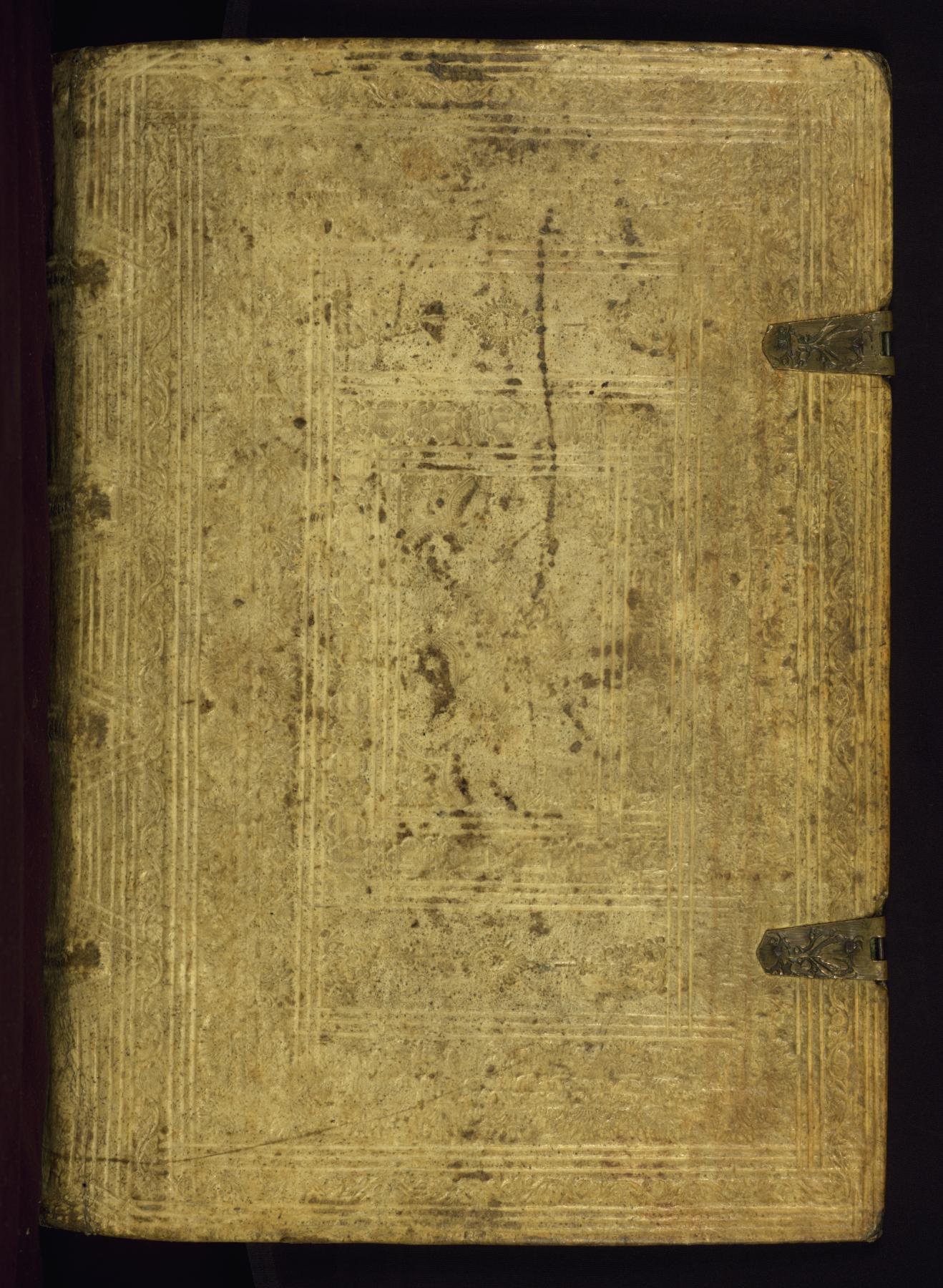Homilary
(Manuscripts and Rare Books)
This richly illuminated fourteenth-century German homilary is particularly interesting for its rare bifolium of drawings bound in at the front of the book. The headgear worn by the nuns in the drawings is characteristic of Cistercensian and Premostratensian nuns in northern Germany as early as circa 1320. Evidence for dating and localization is also found in the manuscript's relationship with a second homilary in the Bodleian Library (Oxford, Bodleian Library, Ms. Douce 185). Despite minor codicological differences--page layout, textblock dimensions, and ruling--it seems likely that the two homilaries were composed as a set in one scriptorium. The drawings at the beginning of the Walters manuscript were inspired by miniatures within the book and are very similar to the style of Master of Douce 185, recently identified as a collaborator of the Willehalm Master. Although the Walters homilary lacks internal evidence for localization, it can be attributed to the lower Rhine on the basis of general affinities between work of this region and English art. The Walters homilary is stylistically close to the small ivory book illustrated with fourteen paintings of the Passion in the Victoria and Albert Museum (London, Victoria and Albert Museum, inv. no.11-1872), which has Westphalian and north German characteristics. Palette, figural drawings, the use of checkered spandrels, large ivy-leaf terminals, and ape marginalia in the Walters homilary are also close to fragments of an antiphonary from Westphalia scattered in German collections (Dusseldorf, Universitatsbibliothek, Ms. D. 37a, b, c and Hamm, Stadtisches Gustav-Lubcke-Museum, Mss 5474-5476). A second group of stylistically related manuscripts can be found in a two-volume antiphonary from the Dominican nunnery of Paradise near Soest (Dusseldorf, Universitatsbibliothek, Mss. D.7 and D.9).
Provenance
Provenance (from the French provenir, 'to come from/forth') is the chronology of the ownership, custody, or location of a historical object. Learn more about provenance at the Walters.
Léon Gruel and Robert Engelmann, Paris, late nineteenth-early twentieth century, [1]; purchased by Henry Walters, Baltimore; by bequest to Walters Art Museum, 1931.
[1] no. 139
Exhibitions
| 2024-2025 | If Books Could Kill. The Walters Art Museum, Baltimore. |
| 2013 | Living by the Book: Monks, Nuns, and Their Manuscripts. The Walters Art Museum, Baltimore. |
| 2010-2011 | Beasts on Parchment: Picturing Animals in Medieval Manuscripts. The Walters Art Museum, Baltimore. |
| 2009 | The Saint John's Bible: A Modern Vision through Medieval Methods. The Walters Art Museum, Baltimore. |
| 2006 | Schatzkammer: Henry Walters' German Manuscripts. The Walters Art Museum, Baltimore. |
| 1995 | To Hell and Back: Medieval Images of the Afterworld. The Walters Art Gallery, Baltimore. |
| 1984-1985 | Illuminated Manuscripts: Masterpieces in Miniature. The Walters Art Gallery, Baltimore. |
Conservation
| Date | Description | Narrative |
|---|---|---|
| 5/18/1982 | Treatment | stabilized |
Measurements
Closed Book: H:12 7/8 × W: 9 11/16 × D: 3 9/16 in. (32.7 × 24.6 × 9.1 cm)
Folio: H: 12 × W: 8 3/8 in. (30.5 × 21.2 cm)
Credit Line
Acquired by Henry Walters
Location in Museum
Not on view
Accession Number
In libraries, galleries, museums, and archives, an accession number is a unique identifier assigned to each object in the collection.
In libraries, galleries, museums, and archives, an accession number is a unique identifier assigned to each object in the collection.
W.148
Do you have additional information?
Related Objects



